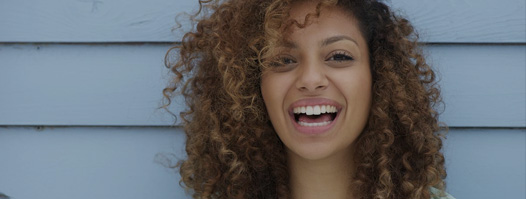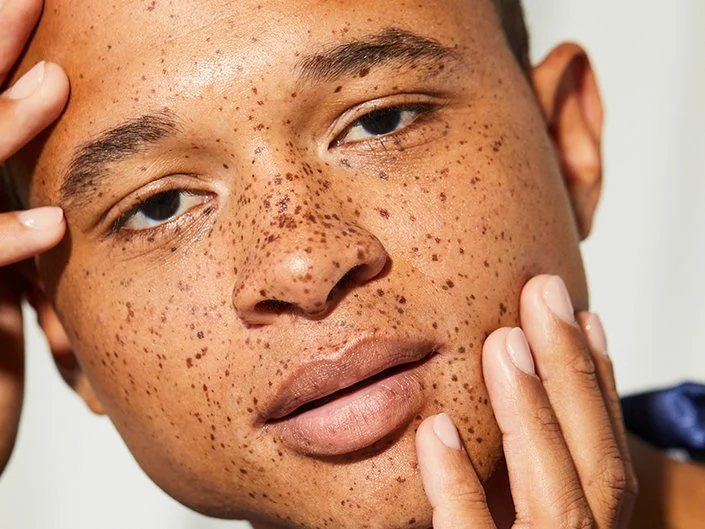- Abuse & The Abuser
- Achievement
- Activity, Fitness & Sport
- Aging & Maturity
- Altruism & Kindness
- Atrocities, Racism & Inequality
- Challenges & Pitfalls
- Choices & Decisions
- Communication Skills
- Crime & Punishment
- Dangerous Situations
- Dealing with Addictions
- Debatable Issues & Moral Questions
- Determination & Achievement
- Diet & Nutrition
- Employment & Career
- Ethical dilemmas
- Experience & Adventure
- Faith, Something to Believe in
- Fears & Phobias
- Friends & Acquaintances
- Habits. Good & Bad
- Honour & Respect
- Human Nature
- Image & Uniqueness
- Immediate Family Relations
- Influence & Negotiation
- Interdependence & Independence
- Life's Big Questions
- Love, Dating & Marriage
- Manners & Etiquette
- Money & Finances
- Moods & Emotions
- Other Beneficial Approaches
- Other Relationships
- Overall health
- Passions & Strengths
- Peace & Forgiveness
- Personal Change
- Personal Development
- Politics & Governance
- Positive & Negative Attitudes
- Rights & Freedom
- Self Harm & Self Sabotage
- Sexual Preferences
- Sexual Relations
- Sins
- Thanks & Gratitude
- The Legacy We Leave
- The Search for Happiness
- Time. Past, present & Future
- Today's World, Projecting Tomorrow
- Truth & Character
- Unattractive Qualities
- Wisdom & Knowledge
Truth & Character Thursdays
Birthmarks
A birthmark is an incredibly distinct thing that makes you unique…(even if you don’t like it!).
I don’t have any major birthmarks like some people, but I grew up knowing 2 people who do have noticeable birthmarks. As children, they both disliked these birthmarks because they made them stand out from their friends. At certain stages of life we just want to blend in, and certain birthmarks make that challenging
However, as we get older and embrace how unique we are, some people embrace these birthmarks as something special about themselves.
One friend of mine has a purple birthmark on a large portion of the right side of her body. It covers most of her arm, comes up onto her neck and face, and down her leg. I believe her specific type of birthmark is called a port wine stain.
The other friend of mine had a brown section of his neck that was a darker brown colour - it was bumpy and continued to grow bigger as he got older.
I know that both of them really struggled with these birthmarks throughout their school years - it’s hard to be different and to stand out. I’m sure they both got teased a lot.
As adults, we can often see more clearly that our differences are what make us special and unique. So if you are here reading this today and wishing away the parts of you that make you you, I hope you will see yourself in a new light. You are special, you and unique, and no one else on earth can do what you can do or be you!
Interesting Fact #1
Any mark that is present on the skin at birth, or that develops soon afterwards, is called a birthmark.
Interesting Fact #2
They are common and many children have a mark of some sort. Most are harmless and some go away as the child grows.
Interesting Fact #3
In most cases, the cause of a birthmark is unknown.
Quote of the day
“Embrace your imperfections. Fancy your flaws. Flaunt your blemishes. Adore your birthmarks. Laugh off glitches. Discuss your setbacks. Don’t call your mistakes ‘Regrets’ Call them ‘Lessons” ― Jasleen Kaur Gumber
Article of the day - Birthmarks
What Are Birthmarks?
Birthmarks are marks on the skin that a baby can develop before birth or soon after. Birthmarks can be flat or raised, have regular or irregular borders, and have different shades of coloring from brown, tan, black, or pale blue to pink, red, or purple.
Most birthmarks are harmless and many even go away on their own or shrink over time. Sometimes birthmarks are associated with other health problems.
What Causes Birthmarks?
Doctors don't know what causes most birthmarks. They can't be prevented and they're not caused by anything done or not done during pregnancy. Most aren't related to trauma to the skin during childbirth. Some kinds may run in families, but a genetic cause hasn't been found.
What Are the Types of Birthmarks?
There are two main types of birthmarks, which have different causes:
- Vascular birthmarks happen when blood vessels don't form correctly. Either there are too many of them or they're wider than usual.
- Pigmented birthmarks are caused by an overgrowth of the cells that create pigment (color) in skin.
Vascular Birthmarks
The most common vascular (blood vessel) birthmarks are macular stains, hemangiomas, and port-wine stains:
Macular stains. Also called salmon patches, angel kisses, or stork bites, these faint red marks are the most common type of vascular birthmark. Macular (MA-kyuh-ler) stains typically are on the forehead or eyelids; the back of the neck; or on the nose, upper lip, or back of the head. They may be more noticeable when the baby cries. Most often they fade on their own by the time a child is 1 to 2 years old, although some last into adulthood.
Hemangiomas. Hemangiomas are superficial when they're on the surface of the skin ("strawberry marks"), deep when found below the skin's surface, and compound when they affect both layers. A hemangioma (hee-man-jee-OH-muh) can be slightly raised and bright red, and usually won't be visible until a few days or weeks after a baby is born. Deep hemangiomas might look bluish because they involve blood vessels in deeper layers of the skin.
Hemangiomas grow quickly during the first 6 months or so of life, then usually shrink and disappear by the time a child is 5 to 10 years old. Some, particularly larger ones, may leave abnormal skin as this happens. Surgery can fix this. Others may leave red pigmented skin, which can be helped with special laser treatment. Although they can be anywhere on the body, most hemangiomas are on the head or neck. They can cause problems if they interfere with sight, feeding, breathing, or other body functions.
Port-wine stains. These discolorations look like wine was spilled on an area of the body, most often on the face, neck, arms, or legs. Port-wine stains can be any size, but grow only as the child grows. They tend to darken over time, and can thicken and feel like pebbles in middle adulthood unless treated. They never go away on their own. Doctors will watch ones near the eye to make sure they don't cause problems. When port-wine stains involve certain parts of the face, other tests (such as an MRI) might be needed.
Pigmented Birthmarks
The most common pigmented birthmarks are café-au-lait spots, Mongolian spots, and moles:
Café-au-lait spots. These very common spots are the color of coffee with milk, which explains the name. They can be anywhere on the body and sometimes increase in number as a child gets older. One alone is not a problem. But call your doctor if your child has 6 or more spots that are larger than a pencil eraser (for a younger child), or larger than a dime (for an older child). Having many café-au-lait spots can be a sign of neurofibromatosis (a genetic disorder that causes abnormal cell growth of nerve tissues).
Mongolian spots. These flat, bluish-gray patches are often found on the lower back or buttocks. They are most common on darker skin, such as on children of Asian, American Indian, African, Hispanic, and Southern European descent. They usually fade — often completely — by school age without treatment.
Moles (congenital nevi, hairy nevus). Mole is a general term for brown spots called nevi (NEE-vye). Most people get moles at some point in life. A mole that's there at birth is called a congenital nevus (NEE-viss) and will last a lifetime. Although the risk is still low, large or giant congenital nevi are more likely to develop into skin cancer (melanoma) later in life. Smaller congenital nevi may have a slight increase in risk. Moles can be tan, brown, or black; flat or raised; and may have hair growing out of them.
How Are Birthmarks Treated?
Macular stains usually fade away on their own. Ones at the back of the neck may last longer, but are not very noticeable. Most other vascular birthmarks can be treated.
Port-wine stains and some hemangiomas can be disfiguring and upsetting for children. Small hemangiomas in less visible locations usually don't need treatment, as most shrink back into themselves by the time a child is 10. Doctors can treat larger or more visible hemangiomas with medicine put directly into the hemangioma, given into a vein (with an IV), or taken by mouth (oral).
Laser (highly concentrated light energy) treatment can help kids with port-wine stains. Most stains get lighter after several treatments with a "pulsed-dye" laser. Some can return and need re-treatment. Laser treatment often starts in infancy when the stain and the blood vessels are smaller. Marks on the head and neck react well to laser treatment. Special makeup also can hide a port-wine stain.
Pigmented birthmarks usually are left alone, with the exception of congenital moles and, occasionally, café-au-lait spots. Doctors can remove moles — particularly large or giant congenital nevi — with surgery, though larger ones may be harder to remove. Laser treatment can remove café-au-lait spots, but these often return.
When Should I Call the Doctor?
A doctor should check a birthmark when it first appears to see what type it is, and to decide what monitoring or treatment it needs, if any.
Call the doctor if a birthmark ever bleeds, hurts, itches, or gets infected. Like any injury where there is bleeding, clean the wound with soap and water and, using a gauze bandage, place firm pressure on the area until the bleeding stops. If the bleeding doesn't stop, call the doctor.
Open sores sometimes form with hemangiomas and can get infected. Pigmented birthmarks rarely cause other problems, but moles should be checked throughout life for changes in size, color, or texture.
What Else Should I Know?
It can be a shock at first to see a birthmark on your newborn. If the birthmark is clearly visible, people might ask questions or stare, which can feel rude. It helps to have a simple explanation ready to handle this. Most people mean no harm, but it's also OK to let them know if they've gone too far.
Even at a young age, kids watch how their parents respond to such situations. This is where they learn how to cope with others' reactions. Talking simply and openly about a birthmark with kids makes them more likely to accept one as just another part of themselves, like hair color. Practice simple answers they can use if asked about it, like "It's just a birthmark. I was born with it." It's also helps kids emotionally to be around supportive family and friends who treat them normally.
Question of the day - What type of birthmark do you have? Do you like it or dislike it?
Image & Uniqueness
What type of birthmark do you have? Do you like it or dislike it?










